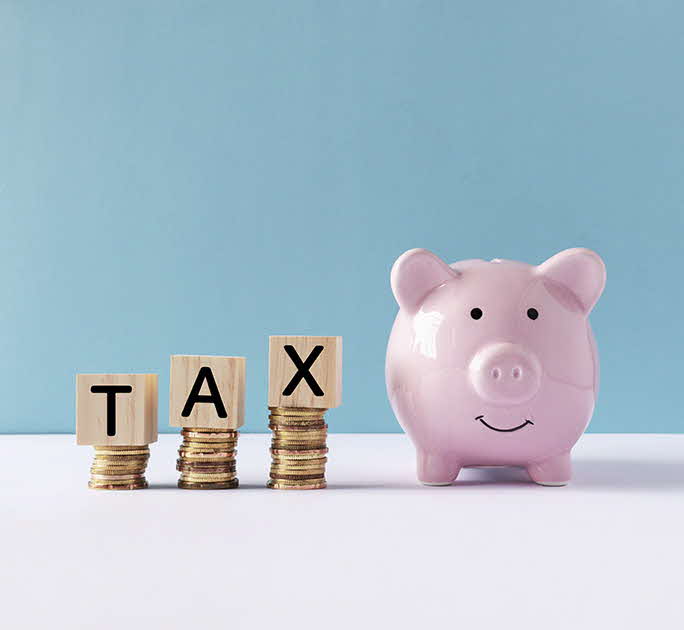- Banking
- Wealth
- Privileges
- NRI Banking
- Treasures Private Client

Best Tax-Saving Mutual Funds & Investment Options 2025
Introduction
Tax planning remains a key focus for investors in 2025, with many seeking strategies to reduce taxable income while fostering long term wealth. This blog offers a comprehensive guide to tax saving mutual funds, primarily Equity Linked Savings Schemes (ELSS), and other investment options that can help optimise your tax liability.
What Are Tax-Saving Mutual Funds?
Tax saving mutual funds, notably ELSS, are specialised equity funds that provide tax deductions under Section 80C of the Income Tax Act. With a mandatory lock in period of three years, which is the shortest among tax saving investments, ELSS funds offer the potential for higher returns through market exposure, though they do carry inherent market risks.
Top 10 Best Tax-Saving Mutual Funds in 2025
In 2025, several ELSS funds have captured the attention of investors through their strong performance and growth potential. The table below presents a carefully selected group of ten funds that have demonstrated noteworthy performance, offering insight into some of the promising options available:
| Fund Name | 5 Years Annualised Return (in percentage) | Fund Size (in Crores) | Expense Ratio |
|---|---|---|---|
| SBI Long Term Equity Fund | 25.59% | 27,306 | 0.95% |
| HDFC ELSS Tax Saver Fund | 23.86% | 15,413 | 1.1% |
| Motilal Oswal Tax Saver Fund | 23.35% | 3,876 | 0.69% |
| Quant ELSS Tax Saver Fund | 23.31% | 10,279 | 0.5% |
| Parag Parikh ELSS | 22.36% | 4,572 | 0.63% |
| DSP ELSS Tax Saver Fund | 21.93% | 15,985 | 0.72% |
| Franklin India ELSS Tax Saver Fund | 21.62% | 6,438 | 1.03% |
| JM ELSS Tax Saver Fund | 21.16% | 180 | 1.27% |
| Bandhan ELSS Tax Saver Fund | 20.29% | 6,620 | 0.67% |
| Quantum ELSS Tax Saver Fund | 20.22% | 212 | 0.89% |
| Quantum ELSS Tax Saver Fund | 20.22% | 212 | 0.89% |
Note: Always verify the latest fund performance and details before making an investment.
Tax-Free Investment Options Beyond Mutual Funds
If you are seeking secure tax-saving investments beyond ELSS, the following options provide stable returns and tax benefits:
- Public Provident Fund (PPF) – A government-backed scheme with a 15-year tenure, offering completely tax-free interest under the EEE (Exempt-Exempt-Exempt) category. Additionally, it is ideal for long-term wealth creation and retirement planning.
- National Pension System (NPS) – A retirement focused investment with deductions under Section 80C and an additional ₹50,000 under Section 80CCD(1B). Allows tax-free withdrawals of 60% of the corpus at retirement, while the remaining 40% is used for an annuity.
- Tax-Free Bonds – Issued by government institutions like NHAI and IRFC, offering fixed, tax-free interest. Best for individuals in higher tax brackets seeking low-risk, steady income. However, capital gains from premature sales are taxable.
Choosing the right tax-free investment depends on financial goals, risk appetite, and investment horizon. A balanced portfolio with a mix of ELSS and the above listed instruments can provide both growth and stability while maximising tax savings. While tax-saving instruments help grow wealth, maintaining liquidity is crucial. A savings account can act as a buffer for emergencies, complementing your investment strategy.
ELSS vs Other Tax-Saving Investment Options
While ELSS funds provide tax benefits with equity exposure and a three-year lock-in period, several other Section 80C investment options offer different risk-return profiles and lock-in durations. The table below compares ELSS with other popular tax-saving instruments to help investors make an informed decision.
| Investment Options | Lock-in Period | Risk Level | Returns Potential | Tax Treatment |
|---|---|---|---|---|
| Equity-Linked Savings Scheme (ELSS) | 3 years | High | Market-linked, high return potential | LTCG tax of 10% on gains above ₹1 lakh |
| Public Provident Fund (PPF) | 15 years | Low | Fixed, government-backed | Tax-free under the EEE category |
| National Savings Certificate (NSC) | 5 years | Low | Fixed, government-backed | Interest is taxable, but qualifies for Section 80C deduction |
| Unit Linked Insurance Plans (ULIPs) | 5 years | Medium to High | Market-linked, varies based on asset allocation | Tax-free under Section 10(10D) if conditions are met |
Choosing the right option depends on individual financial goals, risk appetite, and investment horizon.
How to Choose the Best Tax-Saving Mutual Fund?
Selecting the right ELSS fund requires careful evaluation of various factors to ensure that your investment aligns with your financial goals and risk tolerance. Here are some key aspects to consider:
1. Historical Performance
Past performance is often used as an indicator to assess the consistency of a mutual fund. While it does not guarantee future results, a fund that has delivered stable returns over five to ten years may indicate a well-managed portfolio. Investors should compare the fund’s annualised returns with its benchmark index and peer funds to understand its relative performance.
2. Expense Ratio
The expense ratio represents the percentage of your investment that goes towards fund management fees. A lower expense ratio ensures that more of your returns remain with you rather than being deducted for administrative costs. Generally, actively managed ELSS funds have higher expense ratios than passively managed funds, so it is crucial to find a balance between cost and performance.
3. Fund Management
The expertise and track record of the fund manager play a critical role in an ELSS fund’s success. A skilled manager with experience in handling market fluctuations and implementing effective investment strategies can contribute to better fund performance. Before investing, research the fund manager’s experience, past achievements, and investment style.
4. Portfolio Diversification
A well-diversified ELSS fund helps spread risk by investing across multiple sectors and market capitalisations. A fund with excessive concentration in a single sector may be more volatile, whereas a diversified portfolio balances stability with growth potential. Reviewing the fund’s sectoral allocation and stock holdings can provide insight into its risk exposure.
5. Lock-In Period Considerations
Since ELSS funds come with a mandatory three-year lock-in period, liquidity should be considered. Unlike other mutual funds, you cannot redeem your investment before the lock-in period ends, making it important to ensure that the fund aligns with your medium to long-term financial objectives.
6. Risk Tolerance and Investment Horizon
ELSS funds are equity-based investments, which means the investments are subject to market fluctuations. If you have a higher risk appetite and a long-term investment horizon, you may prefer funds with aggressive growth strategies. Conversely, if you seek relatively lower risk, choosing a fund with a balanced approach across large-cap and mid-cap stocks may be a better option.
7. Tax Benefits and Post-Tax Returns
While ELSS investments provide a tax deduction of up to ₹1.5 lakh under Section 80C, it is equally important to consider post-tax returns. Unlike fixed income instruments like PPF or NSC, returns from ELSS are subject to long-term capital gains tax (LTCG) of 10 percent on gains exceeding ₹1 lakh. Evaluating the net return after tax helps in making an informed decision.
8. Investment Mode: Lump Sum vs SIP
Investors can opt for a lump sum investment or invest systematically through a Systematic Investment Plan (SIP). SIPs allow investors to benefit from rupee cost averaging, reducing the impact of market volatility. If you have surplus funds and are willing to take calculated risks, a lump sum investment may be an option. However, SIPs provide a disciplined approach and reduce timing risks.
By carefully assessing these factors, investors can select an ELSS fund that aligns with their financial objectives, risk appetite, and tax planning requirements. Always conduct thorough research and consider consulting a financial advisor before making investment decisions.
Tax-Saving Strategies for 2025
Maximising tax efficiency requires strategic planning and disciplined investing. Here are some effective strategies to reduce tax liability while optimising returns:
1. Diversify Your Portfolio
Instead of relying on a single tax-saving instrument, spread investments across different options such as ELSS funds, PPF, NPS, and tax-free bonds. Diversification helps balance risk and returns while ensuring liquidity and tax benefits.
2. Start Investing Early
The sooner you start investing, the more you benefit from compounding. For example, ELSS investments not only provide tax deductions but also offer long-term capital appreciation, making early investing an advantage for wealth accumulation.
3. Utilise the Full ₹1.5 Lakh Limit Under Section 80C
Make sure to fully utilise the ₹1.5 lakh deduction limit under Section 80C by investing in eligible tax-saving instruments like ELSS, PPF, EPF, and life insurance premiums.
4. Leverage Additional Tax Deductions
Beyond Section 80C, explore additional tax-saving avenues such as:
- NPS (Section 80CCD(1B)) – An additional ₹50,000 deduction.
- Health Insurance (Section 80D) – Deduction of up to ₹25,000 (₹50,000 for senior citizens).
- Home Loan Interest (Section 24B) – Deduction of up to ₹2 lakh on home loan interest.
5. Regularly Review and Adjust Your Portfolio
Markets and financial goals change over time. Conduct periodic reviews of your investments to rebalance your portfolio and ensure it aligns with your risk appetite and tax-saving objectives. If an ELSS fund underperforms consistently, consider switching to a better-performing alternative.
By adopting a well-planned tax-saving approach, you can reduce tax liability while building a strong financial foundation for the future.
Conclusion
Effective wealth management involves balancing risk and returns across tax-saving mutual funds, government-backed schemes, and fixed-income instruments to achieve financial stability. Optimising tax savings is a critical component of effective financial planning. ELSS funds offer an attractive mix of shorter lock in periods and the potential for higher returns, while alternatives such as PPF, NSC, ULIPs, and tax-free bonds provide additional avenues for stability and growth. By carefully assessing your risk tolerance, investment horizon, and financial objectives, you can select a tax saving strategy that meets your needs in 2025. Always consult with a financial advisor to tailor your investments to your unique circumstances.
*Disclaimer: This article is for information purposes only. We recommend you get in touch with your income tax advisor or CA for expert advice.





